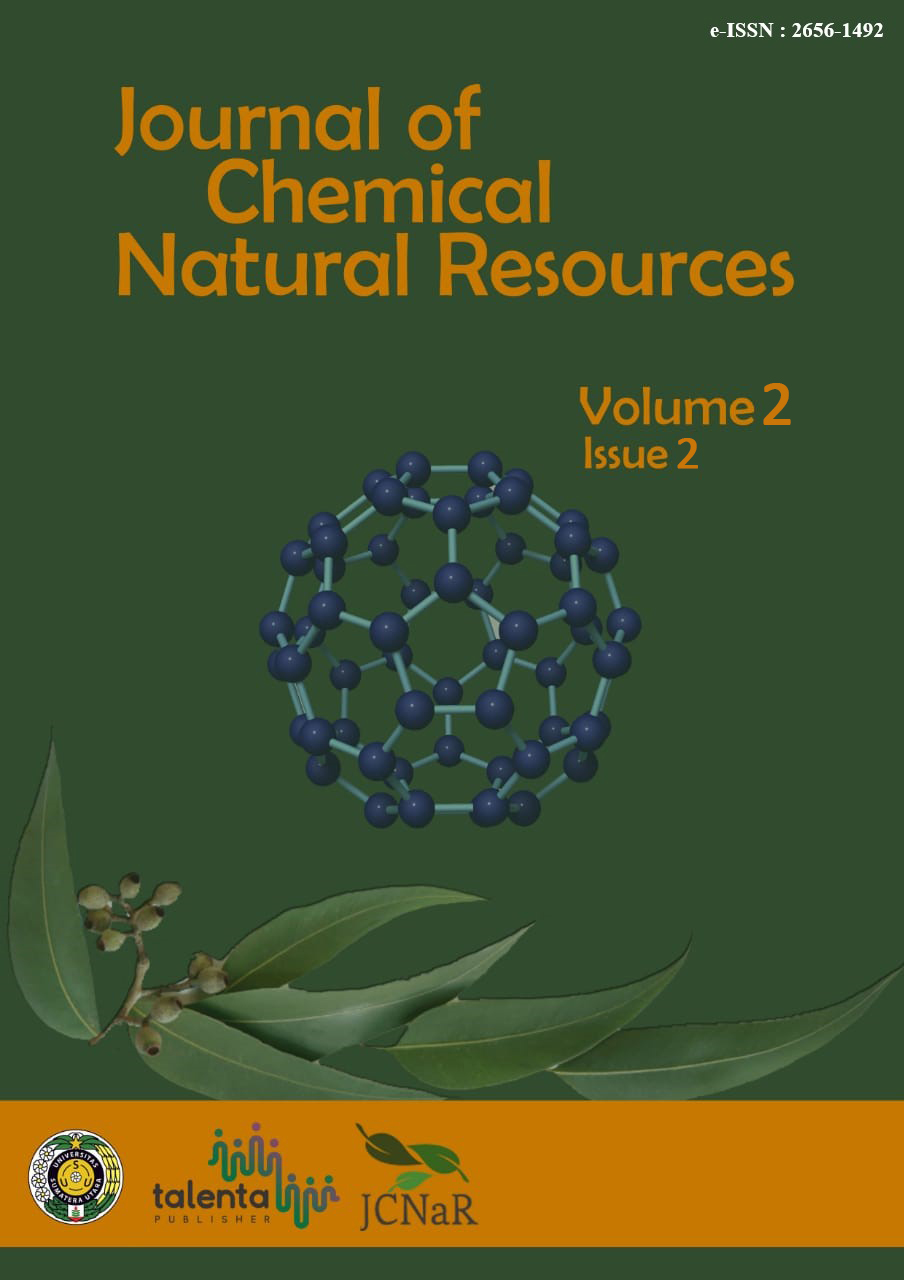Isolation of Cellulose Nanocrysral from Oil Palm Empty Fruits Bunches with Hydrolysis Method using H2SO4 54%.
DOI:
https://doi.org/10.32734/jcnar.v2i2.9323Keywords:
Oil palm empty fruit bunch (OPEFB), α-cellulose, hydrolysis, characterization, cellulose nanocrystal,Abstract
Isolation and characterization of cellulose nanocrystal from oil palm empty fruit bunch (OPEFB), obtained from PTPN IV Adolina, by hydrolysis method using 54% sulfuric acid have been done. The isolation process was carried out in two stages; i.e. α-cellulose insulation from OPEFB, followed by isolation of cellulose nanocrystal from α-cellulose. OPEFB was de-lignification with 3.5% nitric acid and sodium nitrite, then the residue was treated with 17,5% sodium hydroxide, and bleached with H2O2 10%. Isolation of Cellulose nanocrystal was done using 54% sulfuric acid. The result of transmission electron microscopy (TEM) analysis shows that the diameter of cellulose nanocrystal is 66,6 nm. FTIR spectra show the C-O-C stretch of α-cellulose and cellulose nanocrystal at 1141 cm-1, which indicates that there is glycoside bonding in the compound structure. The peak near 3200-3490 cm-1 is representative of the C-H and O-H groups. TGA curves show that α-cellulose occurs to decompose at around 315ºC, while cellulose nanocrystal occurs to decompose at 163ºC. The amount of char residue at 500°C in cellulose nanocrystal was remarkably higher compared to α-cellulose i.e. 30.5% and 7.2% respectively.
Downloads
Downloads
Published
Issue
Section
License
Copyright (c) 2022 Journal of Chemical Natural Resources

This work is licensed under a Creative Commons Attribution-ShareAlike 4.0 International License.















